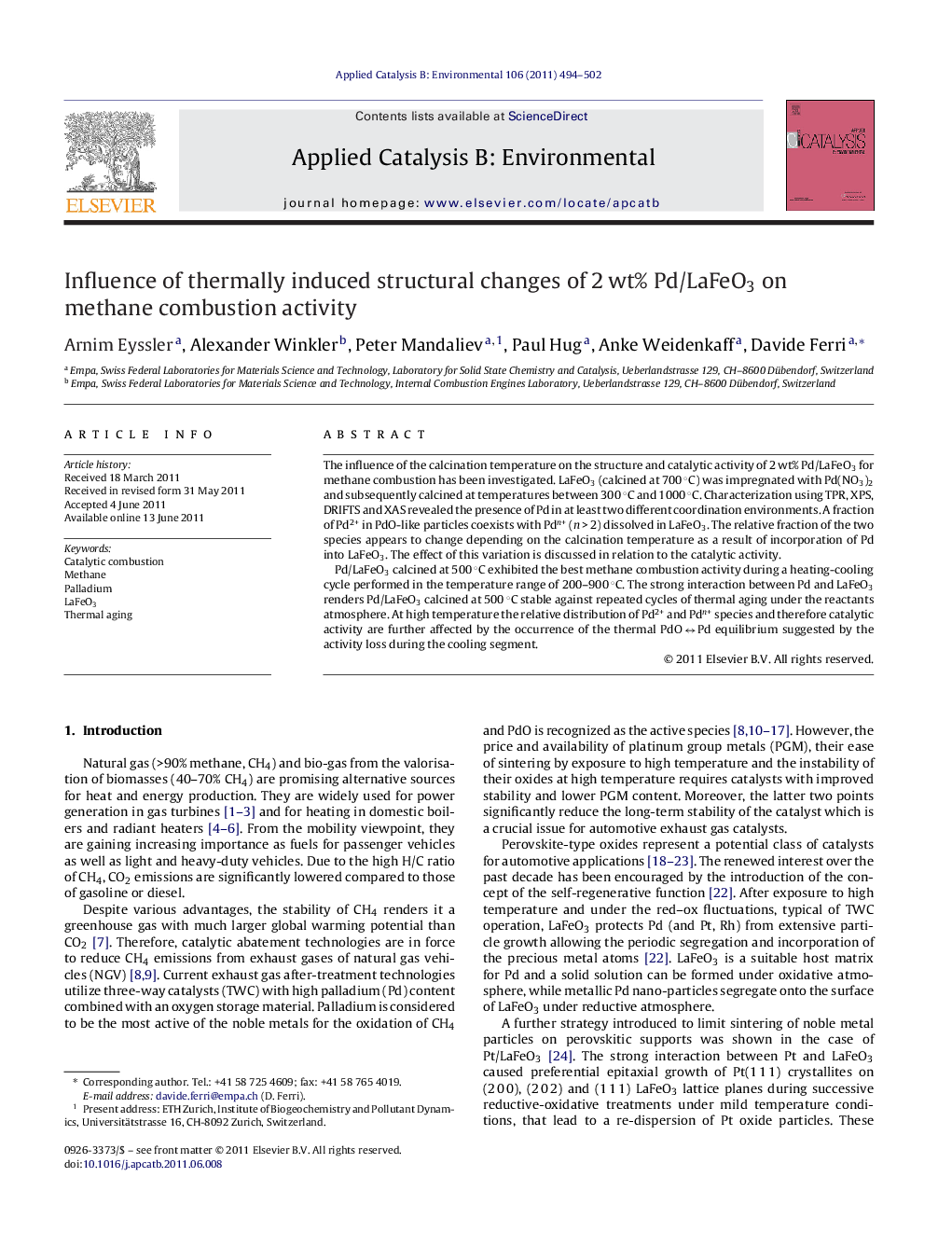| کد مقاله | کد نشریه | سال انتشار | مقاله انگلیسی | نسخه تمام متن |
|---|---|---|---|---|
| 46927 | 46453 | 2011 | 9 صفحه PDF | دانلود رایگان |

The influence of the calcination temperature on the structure and catalytic activity of 2 wt% Pd/LaFeO3 for methane combustion has been investigated. LaFeO3 (calcined at 700 °C) was impregnated with Pd(NO3)2 and subsequently calcined at temperatures between 300 °C and 1000 °C. Characterization using TPR, XPS, DRIFTS and XAS revealed the presence of Pd in at least two different coordination environments. A fraction of Pd2+ in PdO-like particles coexists with Pdn+ (n > 2) dissolved in LaFeO3. The relative fraction of the two species appears to change depending on the calcination temperature as a result of incorporation of Pd into LaFeO3. The effect of this variation is discussed in relation to the catalytic activity.Pd/LaFeO3 calcined at 500 °C exhibited the best methane combustion activity during a heating-cooling cycle performed in the temperature range of 200–900 °C. The strong interaction between Pd and LaFeO3 renders Pd/LaFeO3 calcined at 500 °C stable against repeated cycles of thermal aging under the reactants atmosphere. At high temperature the relative distribution of Pd2+ and Pdn+ species and therefore catalytic activity are further affected by the occurrence of the thermal PdO ↔ Pd equilibrium suggested by the activity loss during the cooling segment.
Figure optionsDownload as PowerPoint slideHighlights
► Calcination of Pd/LaFeO3 at Tcalc = 300, 500, 700, 1000 °C creates two Pd species.
► Pd is present as Pd2+ within surface PdO and Pdn+ (n > 2) in solid solution with LaFeO3.
► The Pd2+/Pdn+ ratio is determined by Tcalc and influences catalytic CH4 oxidation.
► CH4 oxidation between 200 and 900 °C also changes Pd2+/Pdn+ due to the PdO ↔ Pd equilibrium.
► Pd/LaFeO3 (Tcalc = 500 °C) has stronger PdO high temperature stability than Pd/Al2O3.
Journal: Applied Catalysis B: Environmental - Volume 106, Issues 3–4, 11 August 2011, Pages 494–502